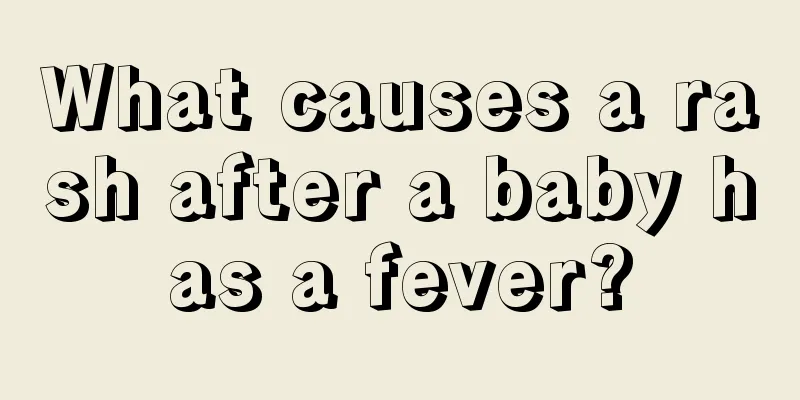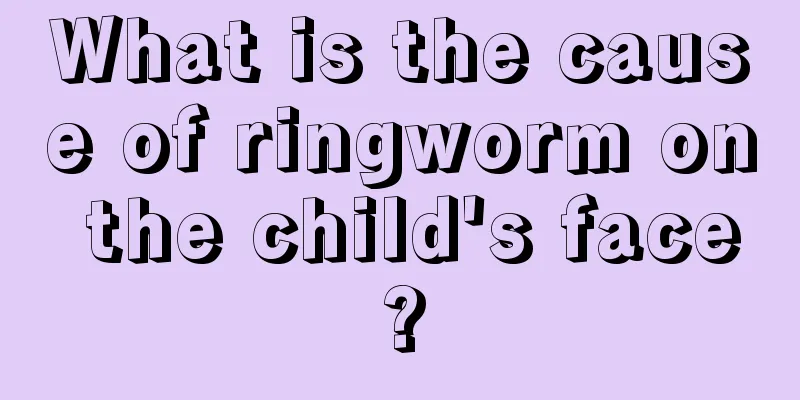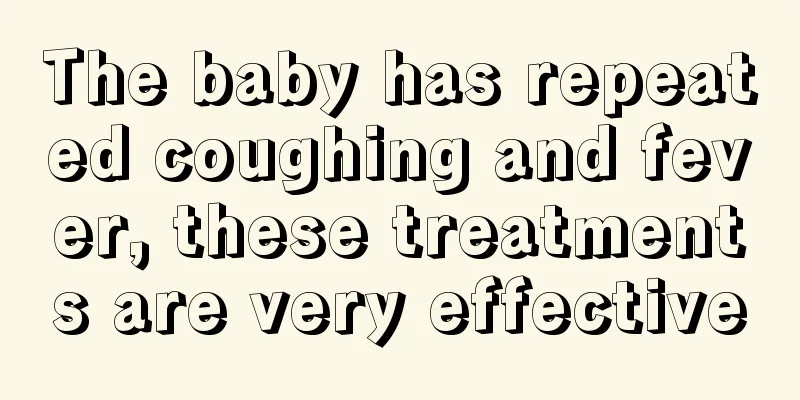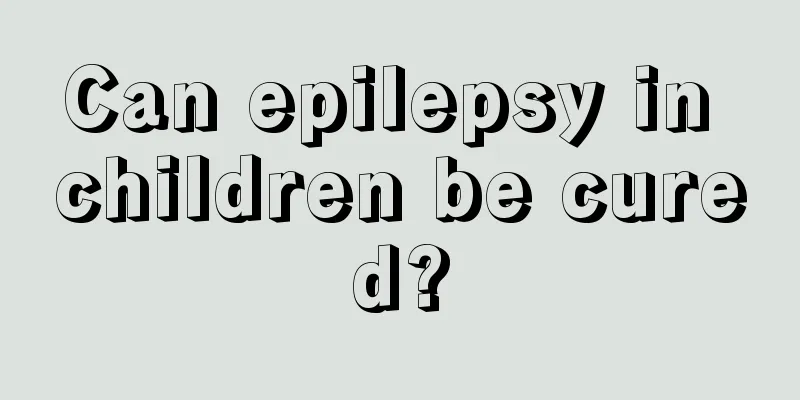What causes a rash after a baby has a fever?

|
We all know that babies are in a period of rapid growth and development. During this period, the body's resistance is relatively poor, and they are particularly prone to some diseases. Many babies have experienced symptoms of rash after a fever. Such symptoms often make parents always very worried, and they don’t know what causes it. Let’s take a look at what causes rash after a baby has a fever. What causes a rash after a baby has a fever? There are many types of rashes, the most common of which are viral rashes and urticaria. As the name suggests, viral rash is a rash caused by viral infection, such as the common measles, rubella virus, and roseola infantum virus. Urticaria is what we call the rash caused by allergies. This rash has a great characteristic, which is that there will be obvious itching, and most of the symptoms are wheals, which are large patches of urticaria that fade when pressed. First of all, you need to distinguish whether it is a viral rash or urticaria. If there is no obvious itching and it goes away on its own, you should generally consider the viral rash first. Next. Your baby developed a rash after the fever subsided. We would first rule out measles because the measles virus usually causes a rash when the fever is highest. The body temperature is usually between 39 and 40 degrees Celsius. If there is no fever, the rash cannot be completely developed. Therefore, the fever cannot be lowered too much when measles occurs. Most children with measles will also experience coughing, photophobia, tearing, runny nose, etc., which we call respiratory catarrh symptoms. If these symptoms are not present at the same time, measles is generally not considered. Of course, because babies nowadays have been vaccinated, measles may not be so typical, but if the rash appears and the fever occurs at the same time, and the fever is the most severe, it is still more than 80% of the symptoms of measles. After the rash subsides, there may be skin desquamation and other symptoms. After the fever subsides, rashes may appear. Two viral rashes may cause: 1: Roseola infantum. A red rash may appear after the fever subsides. It is a pinpoint-sized miliary rash, that is, the rash is very small and not numerous. It starts from the face and grows to the soles of the feet. After all the rashes have grown, they will completely disappear within one day without leaving any trace. 2 Rubella. Rubella virus also causes rashes when the fever subsides, but the rash is larger and may be in clumps. It will fade if pressed and takes 2-3 days to fade completely. After fading, there will be no trace. If the injection is an allergy, an allergic rash will appear. However, the rash appeared after the fever subsided and there was no itching, so it is not considered to be caused by the injection. After understanding why babies develop rashes after having a fever, don't be anxious when you encounter such symptoms. Generally, these symptoms are caused by roseola infantum and generally do not require special treatment. Usually the baby will recover naturally after the rash appears, so parents should not worry too much when this happens. |
<<: What to do if a baby has a nevus of Ota
>>: What to do if a child has a rash
Recommend
What are some things that children can use to ward off evil spirits?
China is a traditional country deeply eroded by f...
What exactly is going on with my baby's cough and wheezing?
Many new mothers become very anxious when they fi...
What disease causes chest tightness and sighing in children?
Generally speaking, people sigh mainly because th...
What vaccination will cause fever?
I believe all parents know that vaccination is a ...
What should I do if my baby loses hair?
If there is a problem with the baby, then the bab...
One and a half year old baby vomiting without fever
Vomiting in babies is a very common phenomenon. I...
2-year-old baby refuses to eat and only drinks milk
Every baby is the apple of his parents’ eyes. Gen...
Treatment for baby humming while sleeping
Children's physical condition is getting wors...
How to treat a four-month-old baby's stomach and intestines?
We all know that babies need to add some compleme...
Treatment for newborns who sleep during the day but not at night
I don't know if any of us have ever encounter...
Two-year-old baby always falls when walking
As babies grow up, they will continue to learn an...
What is the cause of the white spots on the child's body?
If white spots appear on the child's body, pa...
Dexamethasone dosage for children
Many people have experienced allergies. Allergies...
What are the benefits of breastfeeding for newborns?
Breastfeeding is a feeding method advocated by ou...
What is the normal frequency of bowel movements for a mixed-fed baby?
When the baby is six or seven months old, mixed f...









